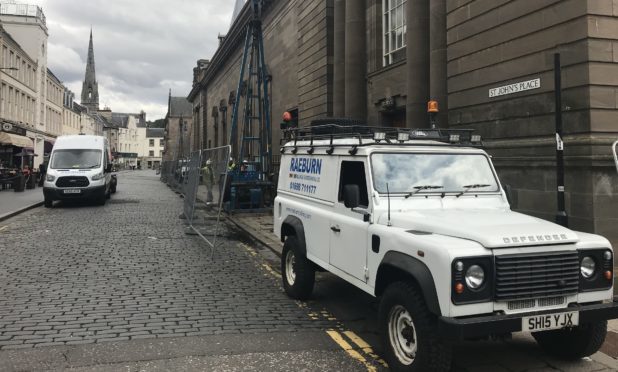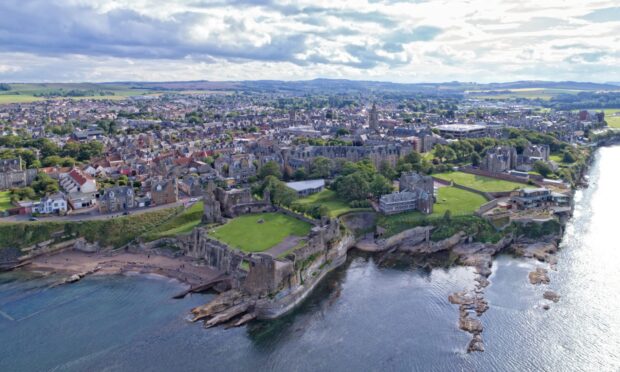The next phase of Perth City Hall’s multi-million pound transformation is under way.
Engineers have descended on the historic venue for several weeks of surveys and rudimentary work.
Security has also been ramped up at the site, with temporary CCTV units installed around the B-listed building.
Raeburn Drilling teams will carry out bore hole tests on the north side of the hall this week, before similar work on the southern section.
Afterwards, the operation will move inside the building where the floor will be removed to allow for internal investigations and measurements.
A Perth and Kinross Council spokesman said the company will also bring in skips and welfare facilities during the work.
“This internal surveys are expected to take six to eight weeks,” he said.
The work will help inform a detailed planning application, which is likely to be lodged before the end of the year.
Dutch firm Mecanoo has been picked to convert the Edwardian venue into a major arts hub.
It followed an international competition to find a designer for the highly anticipated project.
The city centre block has stood empty for more than a decade, while the local authority scrabbled to agree a way forward.
Councillors approved Mecanoo’s plan in August, after hearing it was the most affordable, as well as the favourite among local residents.
The hall, which is on the official buildings at risk register, was fenced off in January.
Around £20 million has been budgeted for city hall, as part of a £30 million investment in the city’s cultural assets including an overhaul of Perth Museum and Art Gallery.
The new-look hall, which could become home to the Stone of Destiny, is expected to bring in an extra 272,000 visitors to the city by 2023, pumping more than £1 million into the local economy.
Mecanoo’s construction costs were just over £11 million, although the company’s fee has been kept confidential.
The company was the preferred choice for Historic Scotland, which previously saved the building from demolition.
The heritage authority preferred the design because it did not radically alter the roof of the building, unlike proposals put forward by other designers.










